Advertisements
Advertisements
Question
In the given figure, AB and DE are perpendicular to BC.
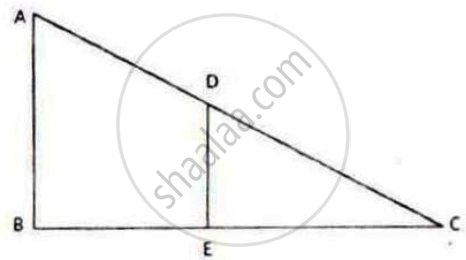
1) Prove that ΔABC ∼ ΔDEC
2) If AB = 6 cm; DE = 4 cm and AC = 15 cm. Calculate CD.
3) Find the ratio of area of ΔABC: area of ΔDEC
Solution
1) In ΔABC and ΔDEC,
∠ABC = ∠DEC = 90°`
∠ACB = ∠DCE (Common)
∴ ΔABC ~ ΔDCE (AA criterion)
2) Since ΔABC ∼ ΔDEC,
`"AB"/"DE" = "AC"/"CD"`
`=> 6/4 = 15/"CD" => 6 xx CD = 60 => CD = 60/6 = 10 cm`
3) It is known that the ratio of areas of two similar triangles is equal to the square of the ratio of their corresponding sides.
`=> (Ar(ABC))/(Ar(DEC)) = "AB"^2/"DE"^2 = 6^2/4^2 = 36/16 = 9/4`
`=> ar(ABC) : ar(DEC) = 9 : 4`
APPEARS IN
RELATED QUESTIONS
ABCD is parallelogram and E is a point on BC. If the diagonal BD intersects AE at F, prove that AF × FB = EF × FD.
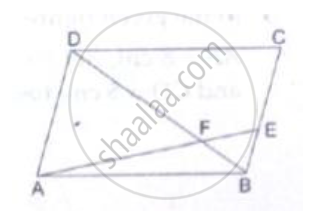
Select the appropriate alternative.
In ∆ABC and ∆PQR, in a one to one correspondence \[\frac{AB}{QR} = \frac{BC}{PR} = \frac{CA}{PQ}\]
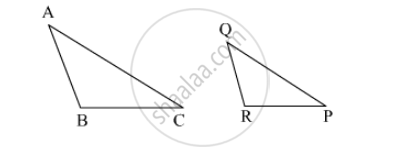
The actual area of an island is 1872km2 . On a map, this area is 117 cm2. if the length of the coastline is 44cm on the map, find the length of its actual coastline.
A model of an aeroplane is made to a scale of 1 : 400. Calculate : the length, in cm, of the model; if the length of the aeroplane is 40 m.
In the adjoining figure. BC is parallel to DE, area of ΔABC = 25 sq cm, area of trapezium BCED = 24 sq cm, DE = 14 cm. Calculate the length of BC.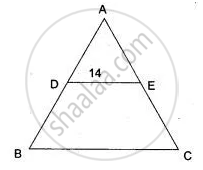
In the given figure ABC and CEF are two triangles where BA is parallel to CE and AF: AC = 5: 8.
(i) Prove that ΔADF ∼ ΔCEF
(ii) Find AD if CE = 6 cm
(iii) If DF is parallel to BC find area of ΔADF: area of ΔABC.
In ΔABC, DE is parallel to BC and DE = 3:8.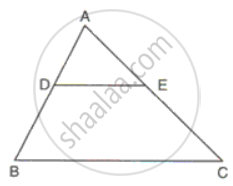
Find:
(i) AD : BD
(ii) AE, if AC = 16.
In ΔABC, point D divides AB in the ratio 5:7, Find: BC, If DE = 2.5cm
The diagonal AC of a parallelogram ABCD intersects DP at the point Q, where P is any point on side AB. Prove that CQ x PQ = QA x QD.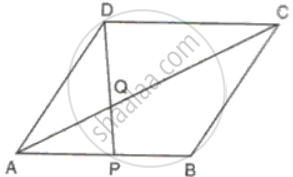
Given ΔABC ~ ΔDEF, if ∠A = 45° and ∠E = 35° then ∠B = ?
